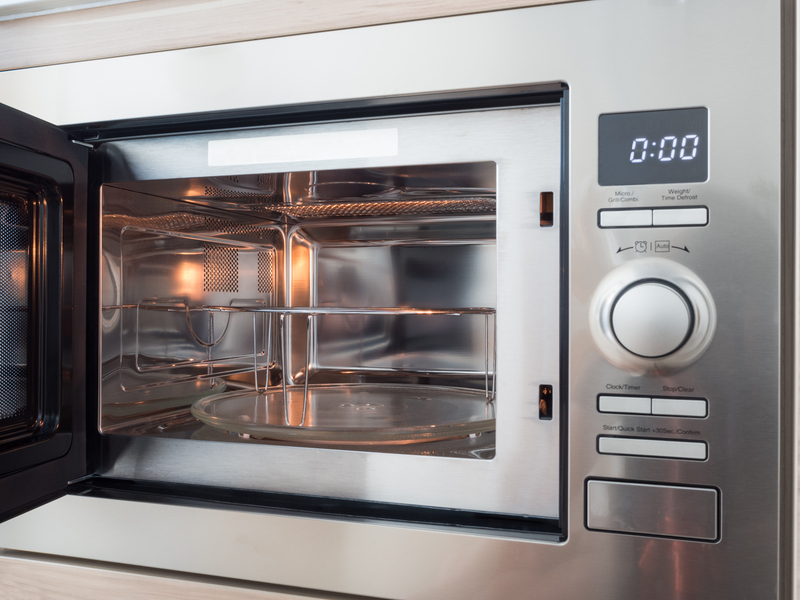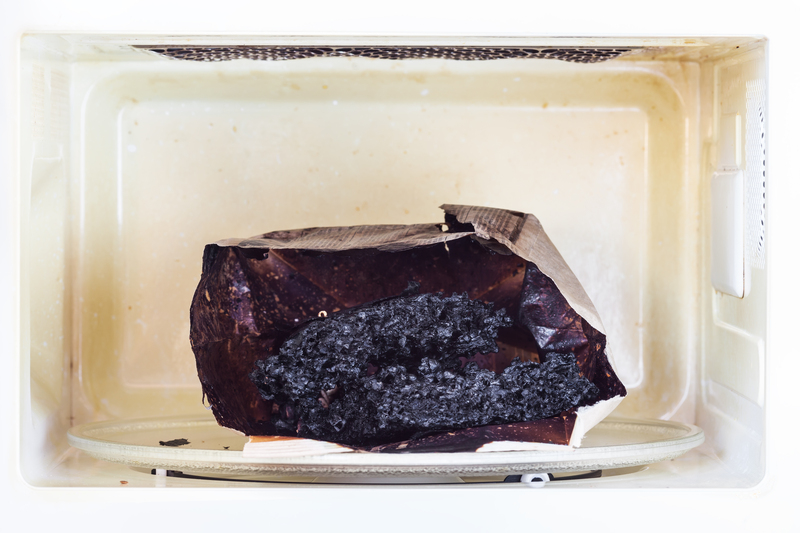Master the art of efficient window cleaning techniques
Posted on 08/09/2025
Master the Art of Efficient Window Cleaning Techniques
Are you tired of streaky, smudged, or grimy glass that blocks natural light and dulls your view? Learning how to master the art of efficient window cleaning techniques can bring a sparkling clarity to your home, boost curb appeal, and even enhance your overall mood. This comprehensive guide will walk you through innovative, time-saving methods to clean your windows like a professional.

Why Efficient Window Cleaning Is Essential
A clean window does more than just look good--it plays a critical role in maintaining your property and indoor environment. Here are some compelling reasons to make efficient window cleaning a regular habit:
- Improved Natural Light: Clean glass maximizes sunlight penetration, making rooms brighter and more inviting.
- Better Indoor Air Quality: Removing dirt, dust, and allergens helps prevent respiratory discomfort.
- Enhanced Aesthetic Appeal: Sparkling windows uplift the exterior and interior of your property.
- Increased Window Lifespan: Dirt and hard water spots can corrode or etch glass over time.
- Energy Savings: More sunlight can reduce heating and lighting costs by up to 10%.
Preparing for Efficient Window Cleaning
Gathering the Right Tools and Materials
The first step to mastering efficient window cleaning methods is being prepared. Having the proper equipment saves time, minimizes mess, and protects both you and your windows from damage. Here's what you'll need:
- Squeegee with replaceable rubber blade
- Microfiber clothes or lint-free towels
- Bucket with warm water
- Mild window cleaning solution (store-bought or homemade)
- Soft-bristle brush or sponge
- Extension pole (for hard-to-reach windows)
- Scraper for stubborn debris (optional, use with care!)
- Dust mask and gloves (for safety and allergen protection)
Pro Tip: Avoid using paper towels or abrasive materials--they tend to leave lint or scratch glass surfaces.
Choosing the Ideal Window Cleaning Solution
Selecting the right cleaning solution is fundamental for achieving streak-free, sparkling windows. Commercial window cleaners are effective, but you can also make a simple, eco-friendly version at home:
- Mix one part distilled white vinegar with one part water, or
- Add a few drops of dish soap to warm water for extra grease-cutting power
*Distilled water prevents mineral deposits that create streaks*
Step-by-Step Efficient Window Cleaning Techniques
1. Dust, Sweep, and Prepare the Area
Start your task by removing any dust, cobwebs, or loose debris from the window frame, sill, and screen. Use a soft brush or a gentle vacuum attachment. This step prevents grime from mixing with your cleaning solution and reduces the need for repeated cleaning.
2. Wash & Rinse the Window Screens
Often overlooked, screens can collect layers of dust, pollen, and insects. Take them out and give them a gentle wash with soapy water and a soft brush. Rinse thoroughly and allow to dry before replacing them.
3. Apply the Cleaning Solution
Spray or sponge your cleaning solution generously onto the glass surface. If you're dealing with very dirty windows, let the solution sit for a minute to loosen dirt.
- _Tip: Always work in the shade or on a cloudy day. Direct sunlight can dry your solution too quickly, leaving pesky streaks._
4. Squeegee Like a Professional
Now for the most critical skill in efficient window washing techniques: the squeegee method.
- Start at the Top: Drag the squeegee from the top of the window to the bottom in a single, straight stroke.
- Wipe the Blade: Use a clean microfiber cloth after each pass to avoid streaks.
- Overlap Strokes: Each time, slightly overlap the last stroke to ensure every inch of glass is cleaned.
- Trim the Edges: Use a cloth to wipe the last bits of water from glass corners and edges.
With practice and the right rhythm, this technique will dramatically reduce cleaning time and yield a crystal-clear finish.
5. Dry and Polish
Use a fresh microfiber cloth or a specialized glass towel to buff away any minor drips or streaks. Don't overlook the window frame and sill--any leftover moisture can cause mold or stains in the long run.
Advanced Tips for Expert-Level Window Cleaning
How to Handle Outside Windows
Outer windows tend to collect more grime and hard water spots. Here's how to tackle them:
- Pre-soak dirt and dust: Use a garden hose or a bucket of soapy water before applying cleaning solutions.
- Use an extension pole: This allows you to reach second-story windows safely from the ground.
- Treat hard water stains: Create a paste of vinegar and baking soda, apply gently, and let it sit for 10-15 minutes before rinsing.
Addressing Common Window Cleaning Mistakes
Do you find yourself battling persistent streaks, residue, or unwanted fingerprints? Avoid these common setbacks:
- Overusing Detergent: Too much soap can leave a sticky film; always rinse thoroughly.
- Neglecting to Change Water: Dirty water spreads grime instead of removing it. Refresh your bucket regularly.
- Improper Squeegee Use: A dull, nicked, or dirty blade causes streaking. Replace your blade frequently for optimal results.
- Cleaning in Direct Sunlight: This makes solutions evaporate before you're done, causing streaks. Pick a cool, cloudy day for the best outcome.
Specialized Window Cleaning Techniques for Difficult Windows
Some windows require customized care due to their size, shape, or location. Here are tailored techniques for unique scenarios:
- Bay Windows: Tackle each panel individually using the squeegee technique, changing angles as necessary for best coverage.
- Skylights: Use telescoping cleaning tools and secure your footing before attempting to clean overhead glass.
- Divided-Light Windows: For french panes or grilles, a smaller squeegee or sponge will help you access every section.
- Tinted Windows: Avoid ammonia-based solutions which can harm the tint's adhesive layer. Use mild, non-abrasive cleaners instead.
Eco-Friendly and Non-Toxic Cleaning Solutions
Caring for your windows shouldn't harm the planet. Opt for green window cleaning techniques--they're just as effective and safe for children and pets.
- Vinegar & Water: Mix equal parts for an all-purpose, streak-free solution.
- Lemon Juice: Its natural acidity helps cut through grease and leaves a fresh scent.
- Baking Soda: Used as a gentle scrub for tough stains without scratching glass.
Many commercial eco-cleaners are also available, certified by reputable agencies for environmental safety.
Time-Saving Tips for Busy Homeowners
- Clean Regularly: Frequent, light cleaning is faster and more efficient than sporadic deep cleans.
- Clean All Windows at Once: Assemble all tools and tackle every window in a single session to minimize setup time.
- Break the Task Down: If you're pressed for time, do two or three windows per day instead of scheduling a marathon session.
Organization and consistency are your best strategies for keeping windows glistening year-round without dedicating your weekends to cleaning.
Window Cleaning Safety: Essential Precautions
Safety first! Especially when cleaning exterior or high windows, always take necessary precautions:
- Use Sturdy Ladders: Ensure they're set on even ground and never lean too far to reach distant spots.
- Try Extension Poles: These allow you to clean hard-to-reach windows safely from the ground.
- Wear Non-Slip Shoes: Especially if you'll be standing on a ladder or roof.
- Protect Your Skin: Some cleaning agents can irritate; always use gloves and wear eye protection if splashing is likely.
When to Call a Professional Window Cleaner
While most homeowners can handle routine window cleaning, there are situations where calling an expert is wise:
- Multiple stories or difficult access points
- Heavy staining from hard water or paint overspray
- Broken windows or deteriorated frames
- Lack of time or physical limitations
Experienced pros leverage specialized advanced window cleaning techniques--such as water-fed poles or purified-water cleaning systems--to complete the job quickly and safely.

FAQ: Efficient Window Cleaning Techniques
How often should windows be cleaned?
For best results, interior windows should be cleaned every three to six months, while exterior glass may need to be addressed every one to two months--especially in dusty or rainy climates.
Can I use newspaper to clean windows?
While old-fashioned, newspaper can be used for polishing and buffing, but it's less effective and may leave ink smudges compared to microfiber cloths.
Are there any benefits to professional-grade equipment?
Yes--high-quality squeegees, poles, and eco-friendly solutions help you achieve a pristine, streak-free finish faster, particularly on large windows or commercial spaces.
What's the best way to avoid streaks?
Use distilled water, the right amount of cleaning solution, and always squeegee from top to bottom using overlapping strokes. Dry the squeegee blade frequently for optimal results.
Final Thoughts: Transform Your View with Efficient Window Cleaning
Mastering efficient window cleaning techniques doesn't have to be complicated or overwhelming. By organizing your tools, using the right cleaning solutions, and applying professional methods like the squeegee technique, your windows will look immaculate inside and out. Remember, consistency and care are essential--not only for aesthetics but also for protecting your investment and enhancing your living environment.
Start applying these time-tested, expert window cleaning strategies today. With a little practice and these actionable tips, you'll enjoy clear views, brighter rooms, and a home that shines--truly mastering the art of efficient window cleaning!





